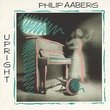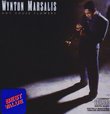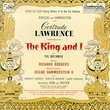| All Artists: John [Classical] Alden Carpenter, John McLaughlin Williams, National Symphony Orchestra of Ukraine Title: Carpenter: Adventures in a Perambulator / Symphonies 1 & 2 Members Wishing: 0 Total Copies: 1 Label: Naxos American Release Date: 6/19/2001 Genre: Classical Styles: Historical Periods, Modern, 20th, & 21st Century, Symphonies Number of Discs: 1 SwapaCD Credits: 1 UPC: 636943906521 |
Search - John [Classical] Alden Carpenter, John McLaughlin Williams, National Symphony Orchestra of Ukraine :: Carpenter: Adventures in a Perambulator / Symphonies 1 & 2
CD DetailsSimilar CDs
Similarly Requested CDs
|
CD ReviewsAn American Master, for real minacciosa | Boston, MA | 04/09/2003 (5 out of 5 stars) "John Alden Carpenter has long been one of the most misunderstood of American composers, one who is damned for being neither one thing nor the other. As the works on this recording demonstrate, he is an American original whose music does not fall into the neat categories of folksy Americana (Copland) or brash experimentalism (Ives) favored by music critics and historians for defining and limiting the spectrum of American art music. Despite many moments of great emotional tenderness throughout his oeuvre, Carpenter is not one of those composers whose music seeks to probe emotionals depths as much as it seeks to engage in the play of the mind. For example, the First Symphony's entire musical material is drawn from the very opening theme which is then subjected to continual variation, leading to the final peroration, said theme all the while retaining just enough of its contours to remain recognizable to those listening closely. The result is a compact, close-knit work with a sense of great unity and nearly a surfeit of event in its 20 minute duration.The Second Symphony is more original. The first movement boasts a new found spareness, harmonies based on 4ths and a swiftly shifting, kaleidescopic emotional canvas ranging from epic portent and ambiguity to beguiling playfulness. The second movement is very nervous and ambiguous of feeling, with a constant heartbeat of a pulse. The third movement is apparently based upon a theme the composer heard while vacationing in Egypt, and it shows throughout. It begins with a trundling rhythm suggesting the movement of a caravan, the theme is passed through the entire orchestra a most colorful manner until a cyclic recollection of material from the second movement brings a swift, crushing coda. For me, this work is the highlight of the disc.In all this music Carpenter shows himself to be one of the great orchestrators as well as a most skilled manipulator of orchestral material. While Adventures in a Perambulator is delightful, it clearly shows his root influences, all of which are absorbed into a subtle, personal style by the time of the symphonies. Carpenter grew far beyond the simple (yet affecting) romanticism of Adventures and the concert hall jazz of his ballet Skyscrapers, and I hope these artists will bring us much more of the mature Carpenter, such as his Patterns and the Carmel Concerto.Be adventurous with Carpenter and you will not be disappointed." A Fine Introduction to an All-but-forgotten Composer Brett A. Kniess | 11/15/2001 (5 out of 5 stars) "John Alden Carpenter, born near Chicago, was born into a prominent family and married women prominent in social circles and the arts community of Chicago. He had the great advantage of studying at Harvard with John Knowles Paine, the most distinguished of 19th-century American symphonist, and briefly with Elgar. Quickly, Carpenter won critical acclaim for works such as "Adventures in a Perambulator," a suite portraying a baby's adventure as his nurse pushes him around town in his carriage. A weird and clever idea--the music quickly betrays the composer's Gallic sympathies. It has elements of French impressionism together with an American cheekiness, along with the use of American popular song, including Irving Berlin's "Alexander's Ragtime Band." This inclusion of the American popular idiom in his music stayed with Carpenter, as evidenced by the two symphonies on this disc.They have the quirky, syncopated rhythms of jazz, and a melodic contour that just sounds American, despite Gallic overtones. The first symphony, a 1940 reworking of a piece that first saw life in 1916-17, is a work whose sound world isn't very distant from that of "Adventures," even though Carpenter overhauled the earlier work pretty drastically. It's a kaleidoscopic piece that might well on some hearings sound like a suite and at other times sound like a genuine symphony. That's because the piece is in one movement though five distinct sections that examine different moods in the manner of character pieces or brief tone poems. But then the two "slow" movements of the work frame on that clearly corresponds to a symphonic scherzo, and the largo finale also clearly builds to an effective peroration that is very symphonic. All these sections are marked either moderato or largo, but there are so many tempo variations that the work has none of the statis of, say, a late Shoshtakovich string quartet in which the tempos seem all to be slow and slower yet. Carpenter's orchestration is colorful and highly skillful with lots of high percussion such as celesta and glockenspiel, as it is in "Adventures," though it also seems a bit too populist for its own good and might remind some of movie music. Still, this is an enjoyable work that deserves an airing in the concert hall.Even more distinguished is the Second Symphony of 1947, again a reworking of an earlier piece. This symphony is built more along traditional symphonic lines, with a first movement that starts in very dramatic style and then develops into a cheerful, balletic affair that balances rumbustiousness with episodes of seductive langor. The second movement has is a blend of drama and longing in the manner of Samuel Barber, while the last movement, based on an Algerian melody that Carpenter heard on vacation, is a strong, driven piece, jazzy and with a sort of tongue-in-cheek martial air about it.This ripely colorful music might not appeal to all, but it is certainly skillfully put together by a true musical craftsman. The performances by John M. Williams and the Ukrainian orchestra are fine indeed, matching the many moods of the music. And Naxos has supplied one of the finer recordings in its American Classics series: big, bright, yet airy. Give this one a try." Impressionist American Brett A. Kniess | Madison, WI | 01/23/2006 (5 out of 5 stars) "John Alden Carpenter's music is not well known to the general public today (nonetheless musicians), but thanks to the Naxos American Classics series, Carpenter's symphonic works are now on record. While I am only familiar with a vocal song cycle of his, Carpenter's music has always seemed to have an innate innocence and tunefulness, with interesting harmonies, all of which are exemplified in these symphonic works: Symphonies 1 & 2 and Adventures in a Perambulator.
Carpenter's 20 minute, one movement, First Symphony features utterly Romantic, tonal, American youthfulness and optimism, not to mention bushel-baskets full of charm. Lonely laments by solo woodwinds show the great melodic qualities of his music, sprite and bouncy sections with chattering woodwinds, bells, and percussion show his natural, colorful orchestrations, often with whimsy, and drama is shown in sweeping string lines and noble brass chorales of great breadth. While nothing is particularly memorable in his First Symphony, it is the moods he convincingly creates that last well past the first hearing. His Second Symphony, also under 20 minutes, is in three movements, each lasting just over 6 minutes. Featuring a large role for piano, the first movement balances itself between two moods, a menacing one at the start with brass and percussion, and a mood that is more a graceful dance with a slight lilting feel. String centered at the beginning, the second movement also alternates between a more complex harmonic forcefulness, and the simplicity of a light and calm melody with a sunny nature. The vivacious and cheery final movement, with its incessant rhythmical qualities, decides the works' ending mood of Romantic joyousness. The popular Adventures in a Perambulator was an early outing in Carpenter's career. The program is the happenings of a baby and his/her nurse taking a morning stroll with the baby's pram. The interesting part is that the description of the day's events are taken from the perspective of the baby. A suite in six movements, the 26-minutes include titled movements (All Aboard, The Policeman, The Hurdy-Gurdy, The Lake, Dogs, and Dreams). Each are an almost impressionistic portrait utilizing harps and bells in addition to the orchestra. The Policeman and The Hurdy-Gurdy are more vivid, while the contrasting movements have a dreamy aura about them. Highly entertaining, the turn of the century work has charm oozing from all of its pores. The National Symphony Orchestra of Ukraine under John McLaughlin Williams doesn't seem suited for the music at first mention, but they are right at home. There is no dark brooding or heaviness marked in the score, nor do we get it from the performers; far from it. This is a better outing by the Ukrainian ensemble than other Naxos offerings and at budget price, is worth investigating. The only issue that I could possibly scrounge up is that it is all pretty light and fluffy, with no real meat and potatoes type of works. I find the shimmering, light musical quality of a neglected American composer, however, rather entertaining." |


 Track Listings (14) - Disc #1
Track Listings (14) - Disc #1![header=[] body=[This CD is available to be requested as disc only.]](/images/attributes/disc.png?v=15401716)
![header=[] body=[This CD is available to be requested with the disc and back insert.]](/images/attributes/disc_back.png?v=15401716)
![header=[] body=[This CD is available to be requested with the disc and front insert.]](/images/attributes/disc_front.png?v=15401716)
![header=[] body=[This CD is available to be requested with the disc, front and back inserts.]](/images/attributes/disc_front_back.png?v=15401716)













